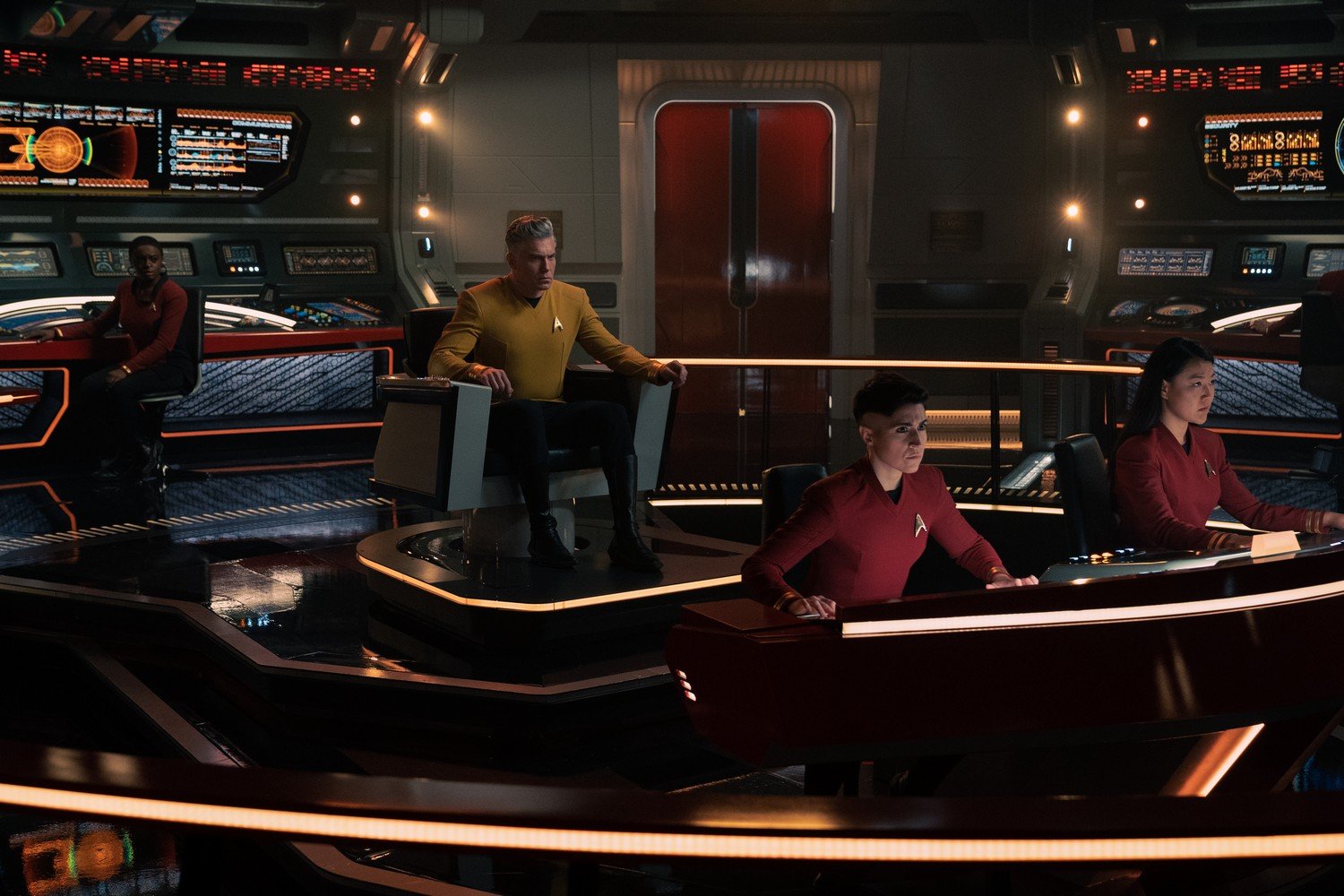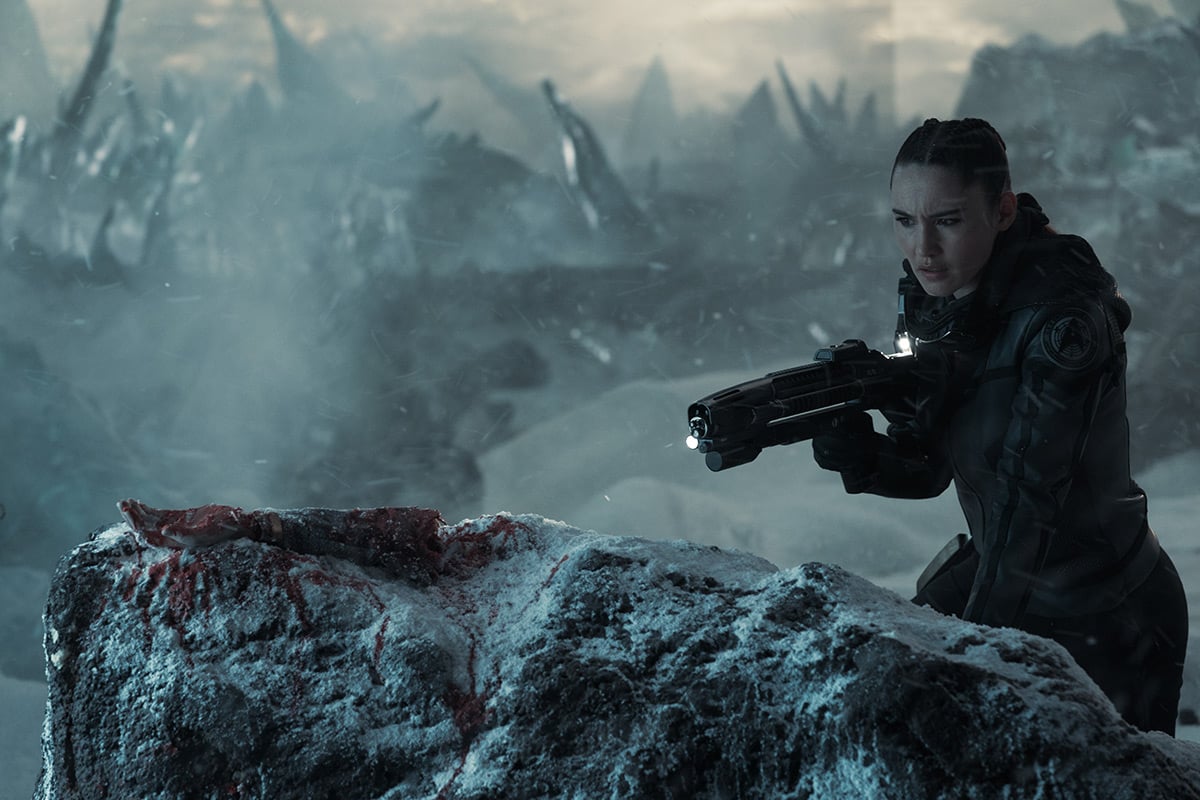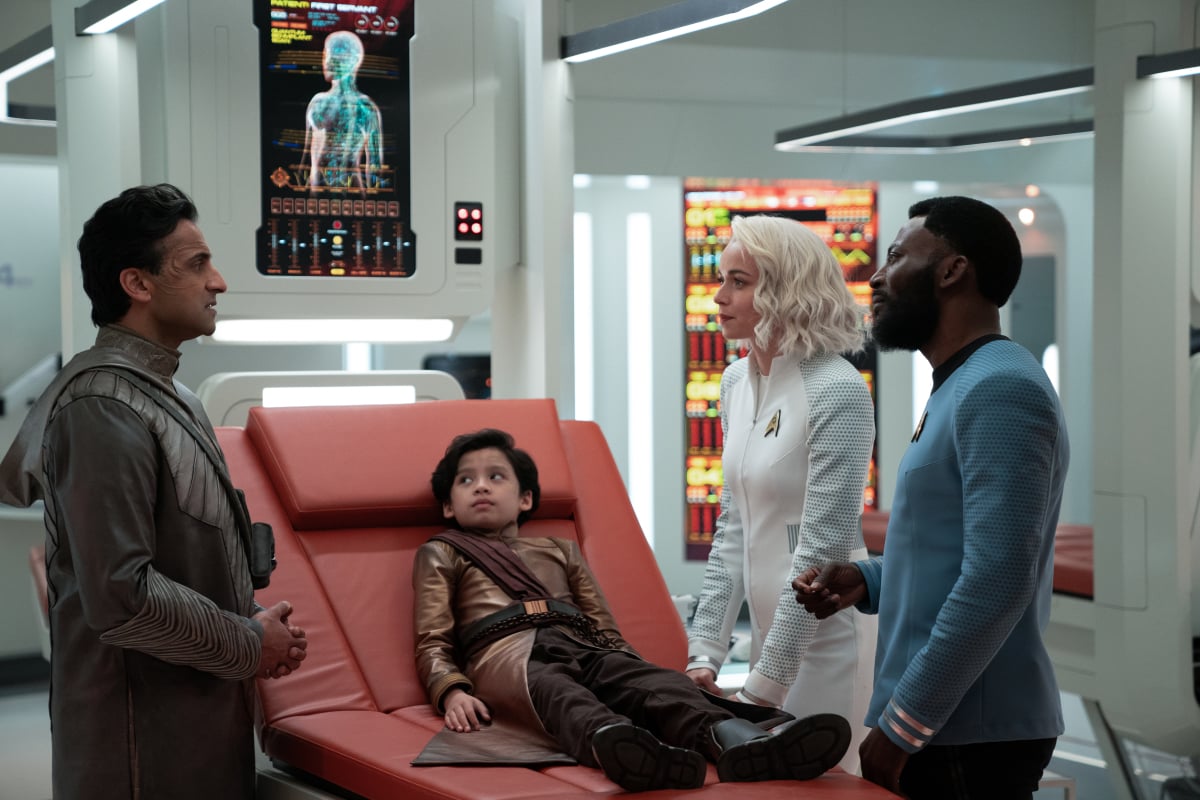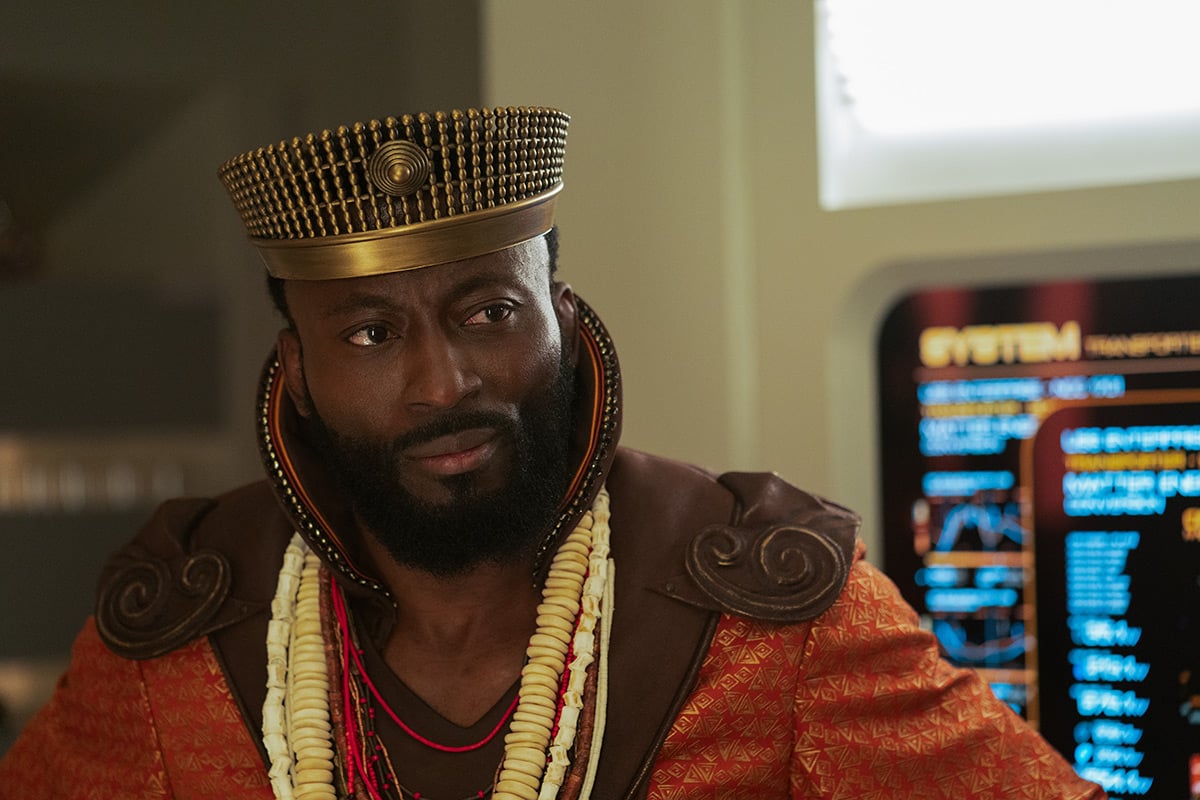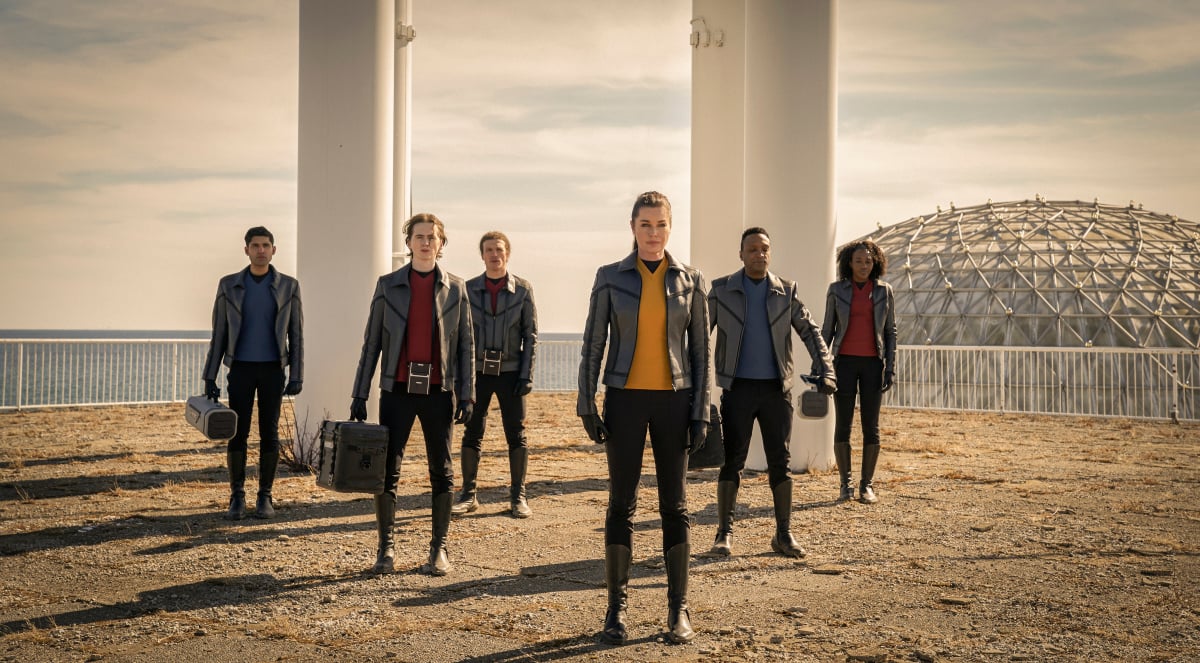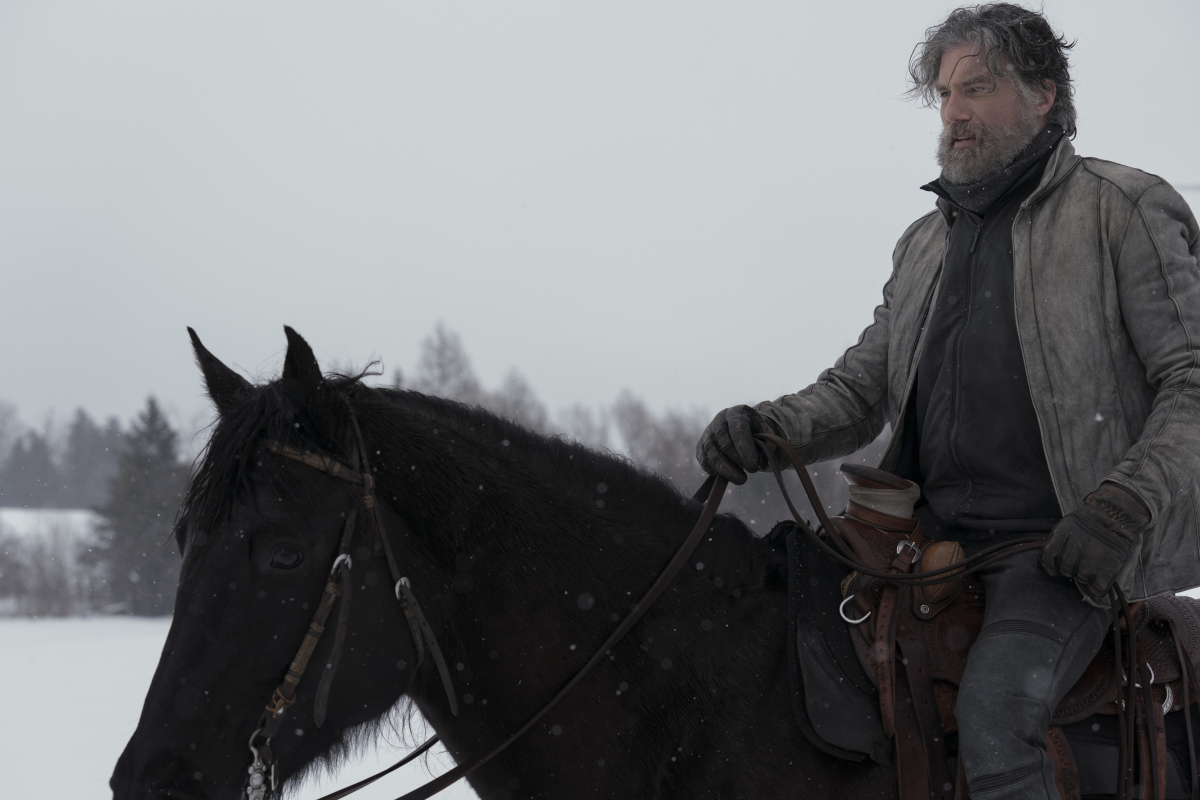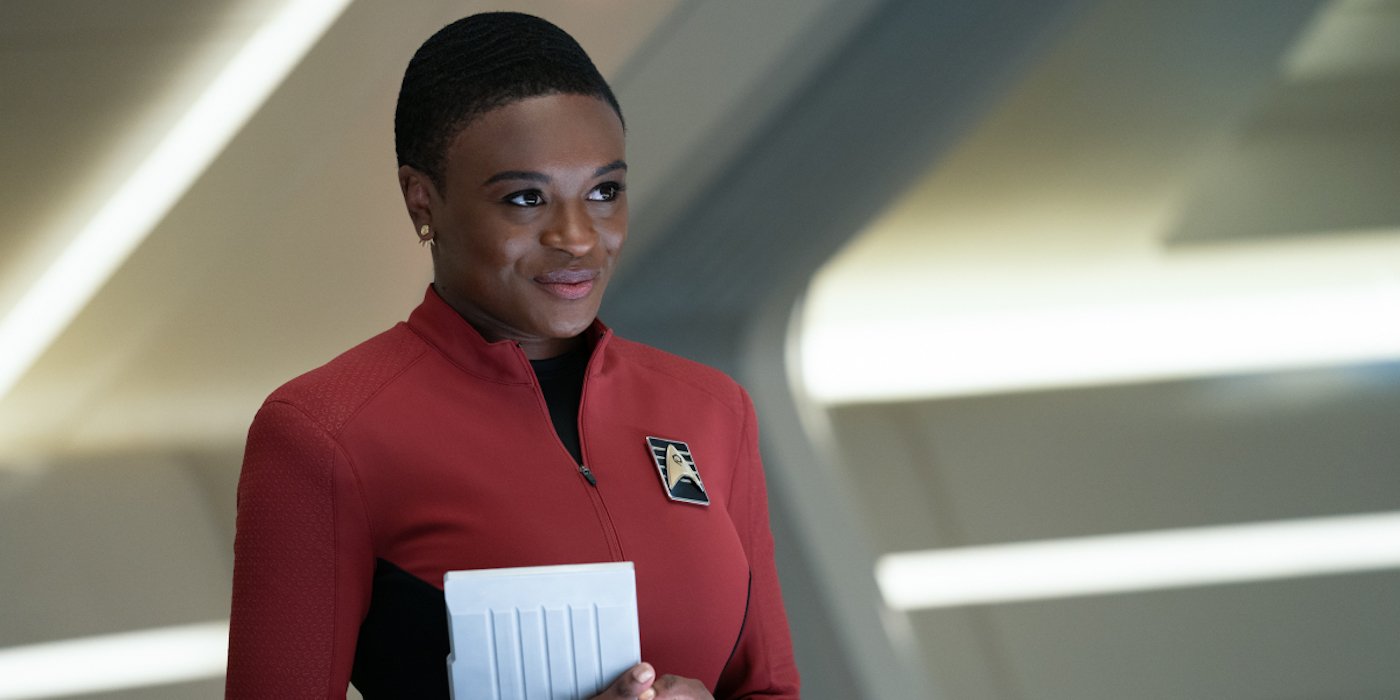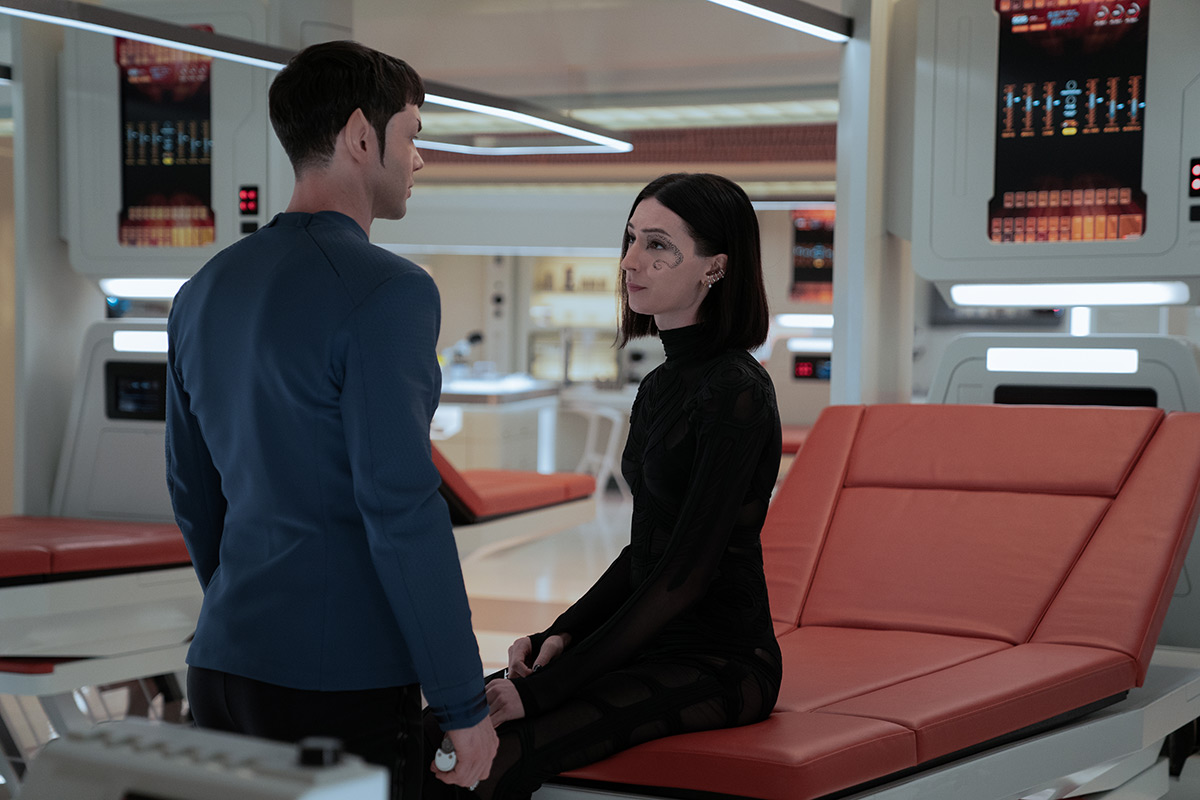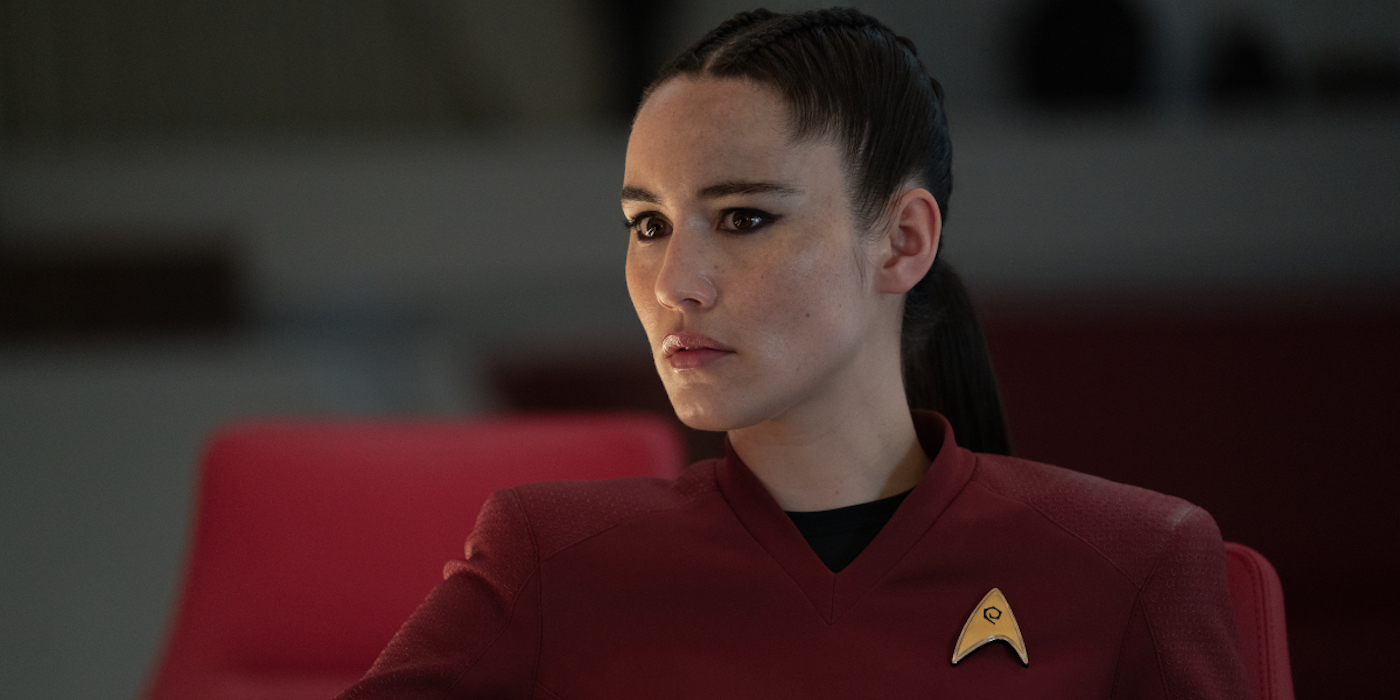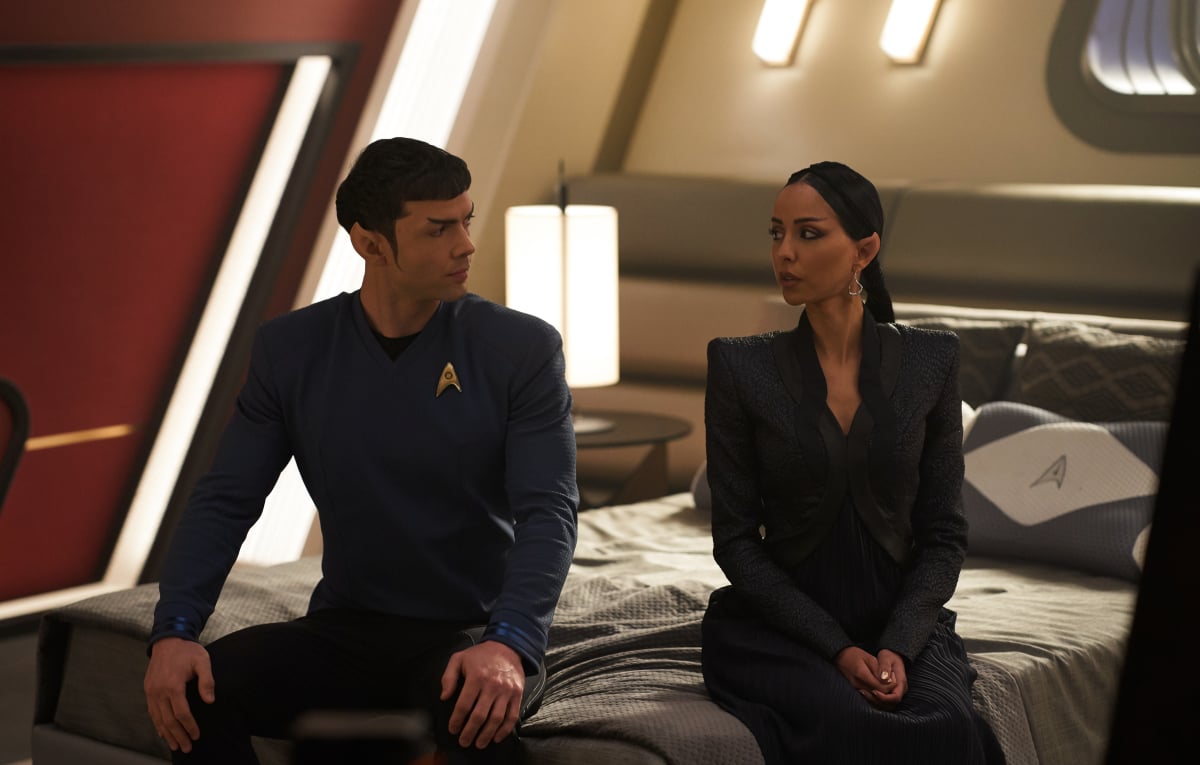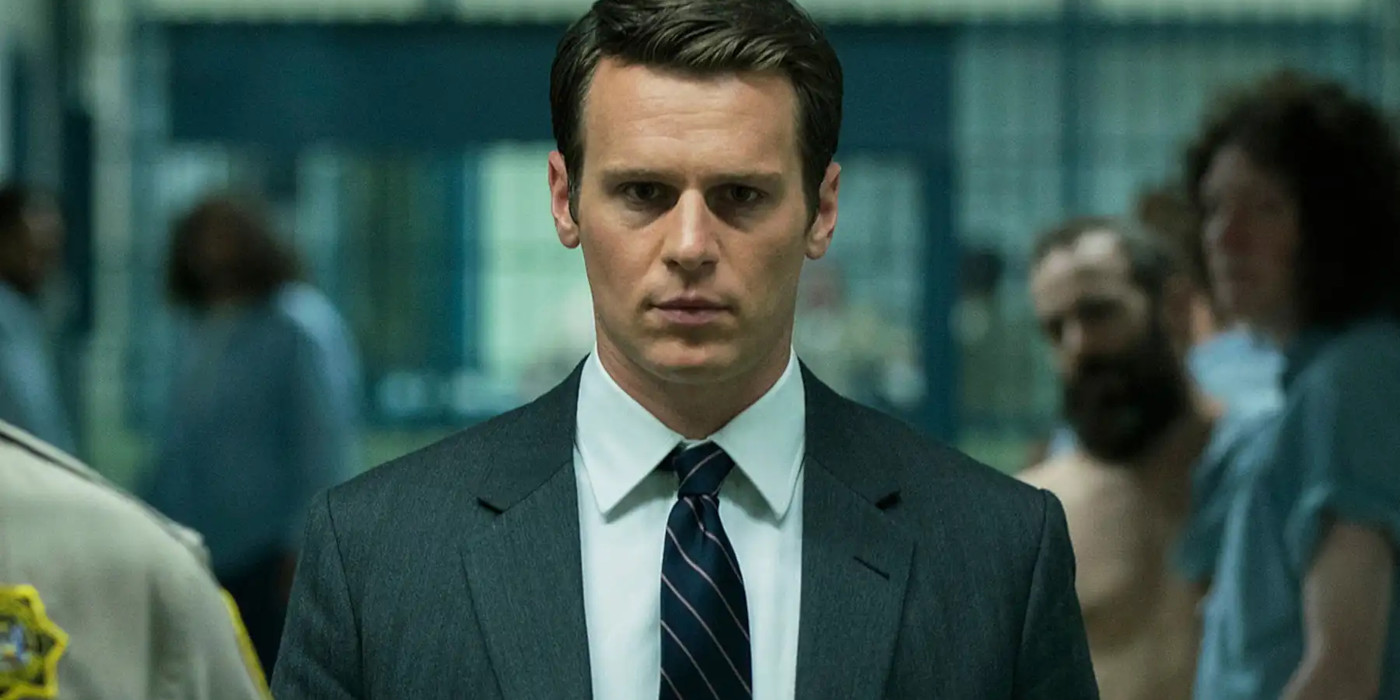Every ‘Star Trek: Strange New Worlds’ Episode Ranked
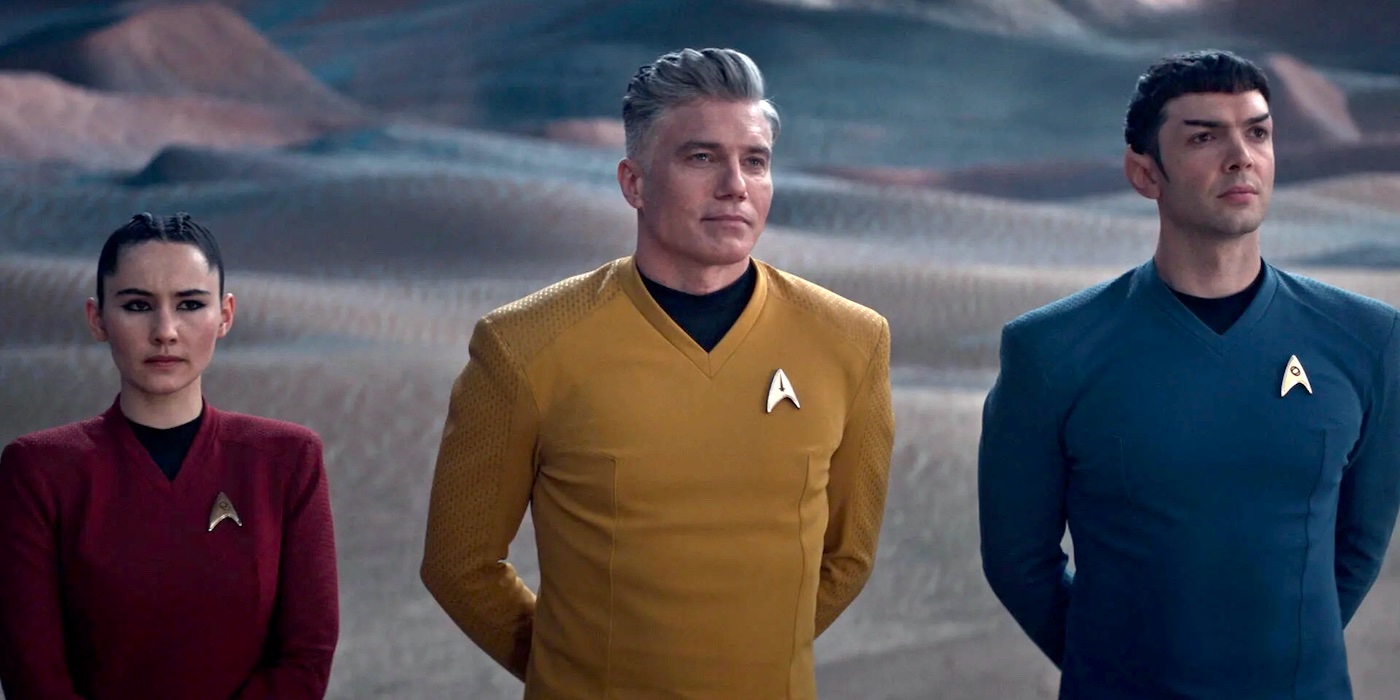
We are roughly one month away from the start of Star Trek: Strange New Worlds season two. So let’s talk about that first season, shall we?
Star Trek: Strange New Worlds is that rare breed of Star Trek show – one whose first season is an unequivocal success story. Even the most cynical voices in the fandom speak in glowing terms when it comes to Captain Pike and his crew. And there’s good reason for that. We know who the likable crew is thanks to character-focused episodes. The series is fun. And everything from the costumes to the sets screams classic Trek.
In short, SNW is the show the old heads have been clamoring for all along.
But it’s not perfect. And it can’t be precisely because it is a first season. That’s the proving ground. The era of unsure-footed experimentation. People talk about how “bad” the first season of Star Trek: The Next Generation is, but it isn’t really. It’s just messy and different. TNG doesn’t even look like TNG in its first season. The costumes are different. The lighting, the makeup, even the way the show is shot — it’s all radically different from what’s to come.
Star Trek: Strange New World’s first season is an incredibly good experiment. It holds a promise of more great Trek on the horizon. But it’s been a year since that first season aired. So let’s look back with a little ranking. For clarity we’ll include how each episode did over on IMDb. In fact we’ll do that with purpose — because public response does play a role in how shows evolve.
Enough preamble. On with the ranking!
#10 – “A Quality of Mercy” (IMDb Ranking: #1)
Yes, you read that right. The highest rated episode is actually the one I think features the show’s biggest drawbacks. There’s a couple reasons I think that, but, before we get into it, a quick refresher. “A Quality of Mercy” is the episode where Pike encounters a future version of himself who launches him into the future to an encounter with the Romulans. Pike’s future self explains that his being alive means the outcome of this encounter will spell doom for the Federation.
People love this episode and it’s easy to see why. This, more than any other episode of Star Trek: Strange New Worlds hews closest to the original series. It hews so close in fact that this episode is, beat for beat, a near recreation of the TOS episode “Balance of Terror“. And that’s kind of the problem. Erica Ortegas behaves wildly out of character because she’s speaking a different character’s lines. And Pike doesn’t make choices all that different from Kirk’s in the original episode.
Then there’s the issue of Pike’s fate. Much of the season deals with Pike’s future in the beepy chair, but this is the only one that sets consequences — and they’re incomprehensible. Basically, Pike must face his fate. If he doesn’t, the Federation will be destroyed at the hands of the Romulans. And also Spock will die.
This sets up the notion that the universe cares about Pike. That doesn’t make sense. It also doesn’t make sense that Spock specifically must die in Pike’s place no matter what. Ultimately, this kind of writing introduces questions that cannot be satisfactorily answered and moves the series away from the individual stories which make it so much fun in the first place.
#9 – “All Those Who Wander” (IMDb Ranking: #3)
I know, I know. Why’s she got to have beef with all the ones we love? This ranking is about more than just the quality of the individual episodes, it’s about their impact on the series as a whole. And this episode which (spoilers) is about Hemmer’s sacrifice and Uhura realizing she does want to be in Starfleet has one notable flaw.
There’s a lot of good here. The aforementioned friendship between Hemmer and Uhura reaches a powerful conclusion here. Hemmer’s death in “All Those Who Wander” feels like what Tasha Yar’s death could’ve been in the TNG episode of “Skin of Evil”. But it’s more than that. There’s also this wonderful aspect where Spock really loses his cool. One of SNW’s greatest strengths lies in showing Spock’s evolution. And the Gorn continue to menace here in a wonderfully Xenomorph-like way.
Two things hamper the episode specifically in ways I think should not be repeated. One is the reliance on introducing red shirt fodder we all know will die. While classic Trek does this a lot, I don’t think it merits repeating because it feels obvious and a little cheap.
But the thing I keep coming back to is Christine Chapel. In TOS she basically has one character note: she unrequitedly loves Spock. What’s great about Star Trek: Strange New Worlds is that Chapel has so much more dimension now. She’s a risk taker! She’s brash! And she dates! But the show has introduced her crush on Spock. And “All Those Who Wander” places it center stage.
Love triangles can be fun! I like other episodes involving the Spock/Chapel/T’Pring situation. But this episode threatens to make too much of Chapel about that.
#8 – “Lift Us Where Suffering Cannot Reach” (IMDb Ranking #7)
Okay, now we’re more aligned. I hope everyone feels good. This episode is the one where it turns out that a utopian society needs to torture children in order for said utopia to perpetuate. It is often compared with the Ursula K. LeGuin short story “The Ones Who Walk Away from Omelas” and that is a fair comparison.
There’s a lot to recommend about “Lift Us Where Suffering Cannot Reach“. The father character really struggles with surrendering his son to a life of torment despite his culture’s normalizing of it. And the crew of the Enterprise’s very existence in the space creates even more conflict. After all, it’s hard to pretend your messed up society is normal when someone who exists outside of it is able to point out how objectively messed up it actually is.
Star Trek is great at telling morality tales. This episode is a good example because there will likely always be some way in which our civilization tries to justify and equivocate bad behavior even when it harms literal children.
The only hitch about this episode is that Pike misses the obvious because he’s too focused on his old flame Alora. And in the previous episode “Spock Amok” (more on that episode later), his whole thing is how thoroughly empathic Pike is. Basically, the struggle is over character consistency and how best to write when Pike (or anyone) falters.
#7 – “The Elysian Kingdom” (IMDb Ranking #10)
Hey, I get to defend the lowest ranked episode on IMDb! It’s always nice to mix things up! “The Elysian Kingdom” is one of the most fun episodes of the first season of Star Trek: Strange New Worlds! If you forgot, this is the episode where a bodiless alien intelligence alters the crew’s memories into thinking they are members of a fantasy world. And it’s all to help M’Benga’s daughter Rukiya.
The costume work alone is incredible! Seriously, give Bernadette Croft every award. But more than that, the episode is a chance for everyone to play against type. Pike gets to be cravenly. Spock and Uhura get to be sinister. Ortegas and Una are girlfriends! And M’Benga, who usually sticks to sickbay, gets to be the king.
The challenge the episode comes up a little short on is how to resolve Rukiya’s terminal illness storyline. We know she cannot stay in the transporter buffer. We also know that M’Benga is fighting a ticking clock. What feels a little out of left field is the resolution.
This sentient nebula offers M’Benga a solution: let Rukiya become part of the nebula and her consciousness will live forever. But here’s the thing: there’s no proof that the nebula is telling the truth. And M’Benga spends much of this first season being distrustful of everyone concerning Rukiya. So the resolution where he both lets her go and finds out immediately that everything is okay feels a little unearned.
In the end The Elysian Kingdom is an enormously fun episode that just doesn’t quite stick it’s deeply emotional landing. It’s still darn good, though.
#6 – “Ghosts of Illyria” (IMDb Ranking #8)
Hey! Another “this one’s actual really good” entry! “Ghosts of Illyria” is the one where we find out that Una is an Illyrian. And we find out that Illyrians futz with their DNA too much and so the Federation won’t let them in because of the Eugenics Wars. But, more than that, it’s a story about how viewing things through an absolute lens can doom us all.
I think the reason this episode is so far down on the IMDb list is because, upon first viewing, it can feel a little thin. The story, on its face is “mystery illness gets on ship and only Una can save everyone”. On a basic level it invents a fascinating illness which spreads across light. But it’s so much more than that. This is a story about the struggles of self acceptance and cultural prejudice.
Yes, the Eugenics Wars are bad. But the Illyrians relationship to genetic alteration is very different from the likes of Khan Noonien Singh. And the way they pit Khan’s descendant La’an and Una against each other a little exposes how easy it can be for two oppressed groups to turn on each other, even if the individuals are friends.
And then there’s the ending where Pike steps in it in a truly beautiful way. When he tells Una he will defend her to Starfleet, he does so by effectively saying she is one of the good Illyrians. That’s the thing about being part of an oppressed minority — you know that stepping out of line at all can lead to unfair consequences.
“Ghosts of Illyria” ends with Una asking when it will be enough for her to be an Illyrian instead of a “good” Illyrian” and it’s an enormously powerful moment.
#5 – “Strange New Worlds” (IMDb Ranking #4)
Hard to believe we’re at the midway point and there’s almost nothing but positive stuff to say form here on out, but that’s what it is, baby! This first season of Star Trek: Strange New Worlds really was just that good. And it starts out with a bang of a pilot that’s all about first contact, the prime directive, and how to pull a civilization on the brink of an extinction level event back towards hope. It doesn’t get much more Star Trek than that.
So many reasons why this episode is good and good for the series. We find out more about Nurse Chapel in this one episode than in all of TOS. We develop relationships between so many of the crewmembers in a way that feels effortless.
But what really sells the whole thing is the micro/macro of destiny. On the micro there’s Pike’s knowledge of his own future fate. He struggles with what to do with knowing he will effectively die horribly in 10 years time. And he’s realization is that such knowledge can spurn him to inspire others to be better and to wear life gloriously.
And on the macro level, “Strange New Worlds” is an episode about understanding and working together to prevent mutually-assured destruction. An episode which talks about the 2021 USA capitol insurrection could be dour. It could try to both sides the situation. Instead SNW bravely says “there was a clear wrong side here and if there’s no consequences for this the world will end”. But the point is that it doesn’t have to.
It’s just an enormously positive and powerful pilot episode that exemplifies all that Star Trek can be when it takes on politics.
#4 – “Children of the Comet” (IMDb Ranking #5)
Every day we get a little bit closer to a fully musical episode of Star Trek. But as of now “Children of the Comet” is the closest we’ve gotten since Vic Fontaine showed up on Star Trek: Deep Space Nine. This episode is about Uhura using music to understand a suspiciously technologically advanced comet and save the day.
Like with all these episodes, though, “Children of the Comet” is about more than its plot. This is also probably the most we’ve ever learned about Uhura prior to this moment. We find out about her family. She realizes she’s worthy of Starfleet. And she messes up with Hemmer by being weird about his blindness and then course corrects. It’s very much an episode where people struggle with their own feelings of inadequacy and then overcome.
This is also another episode about destiny, one which embraces the idea that some things are pre-scripted to happen but not in a way that we can understand. The comet does seem to know what it is doing and what it is doing is bringing life to a nearly lifeless world. But the Enterprise crew cannot fathom it’s infinite knowledge — they can simply do the best they can as a part of events.
“Children of the Comet” is enormously positive while still acknowledging the inherent imperfection in trying to comprehend the divine. Really good stuff that handles faith in a way that Star Trek often struggles with.
#3 – “The Serene Squall” (IMDb Ranking #9)
Just to get it out of the way: this episode’s low ranking on IMDb is entirely due to the fact that a trans woman stars in it and bigots hate that. Too bad. This episode rules.
“Serene Squall” is the episode where the space pirate Captain Angel tricks the Enterprise crew into losing their ship. It is also the episode where Pike uses his skills as a chef to trick Angel’s crew into a mutiny so he can get the Enterprise back. It’s also the one where Sybok shows up.
But, yes, it is also the episode where Angel and Spock talk about what it means to be split down a false binary. Angel tells Spock that he does not need to choose whether he is Vulcan or human. He is neither. He gets to decide what that means. It’s a wonderfully simple way of expressing a lot of ideas, not least of which is being nonbinary trans. It helps that Jesse James Keitel as Angel absolutely kills as easily the best antagonist of season one.
“Serene Squall” also manages to play the Spock/Chapel/T’Pring love triangle perfectly. Each character deals with their own individual stuff while also contending with the ongoing romantic strife. This is how I hope SNW handles this subplot in the future.
As for Sybok, even the hint of him is thrilling precisely because he is a character who has never been handled truly well before. Star Trek V: The Final Frontier is much maligned. It makes so much more sense to go back and try to do that story better as opposed to retelling something that’s already perfect like “Balance of Terror”.
#2 – “Memento Mori” (IMDb Ranking #2)
Hey, look, ma! Me and IMDb agree on something! “Memento Mori” is the first Gorn episode. And the best part is that we don’t even see any Gorn. This episode where La’an has to go into her worst memories to figure out how to fight the Gorn feels like the perfect mixture of “Balance of Terror” and the TNG episode “Q, Who”.
Nicholas Meyer brilliantly imagines space battles as submarine battles in Star Trek II: The Wrath of Khan and this is the best use of that concept since. The tension of “Memento Mori” is incredible. In fact one of the most impressive parts of the episode is that it tricks you into thinking Uhura, a character who can’t die, just might. When it turns out she and Hemmer are okay, the way you will realize you’ve been holding your breath, my goodness!
This is an episode where Spock and La’an get to bond psychically. I think it was around here that Star Trek: Strange New Worlds can basically pick any two characters, thrust them together, and it’ll work.
But really it is the less is more approach that make “Memento Mori” so good. Like with the Borg, the Gorn run the risk of “more is less”. Part of what makes them scary is their alienness and their unknowability. And conversely, the way every member of the crew works like a well oiled machine to survive the un-survivable really speaks to what makes SNW so fun even when it’s scary.
And above all “Memento Mori” proves that Star Trek can and should be terrifying.
#1 – “Spock Amok” (IMDb Ranking #6)
Yes, you read that right. The actual best episode of the season is the one where Spock and T’Pring do a silly body swap trope. Hear me out. There’s a lot more to this episode than Pike hilariously not being able to tell that Spock is T’Pring and T’Pring is Spock.
So, first of all the whole Spock and T’Pring relationship is one of the most important underdeveloped relationships in Star Trek history. Spock is supposed to marry her and then they break up in the TOS episode “Amok Time” without a real explanation for what they were to each other prior.
“Spock Amok” is an episode that shows us how in love Spock and T’Pring are. It also shows us where and how their communication breaks down. Spock is too obsessed with his career. T’Pring clearly has some feelings about Spock being half human. But they are able to use this goofy body swap as a means to understand where the other comes from — that’s beautiful and funny at the same time.
Also, Pike deals with the R’ongovians, a race who embrace the edict of radical empathy. Pike has to put himself in their shoes in order to convince them to join the Federation by saying that they actually have a lot to lose by doing so. It’s a brilliant gambit from one of the most emotionally intelligent captain’s in Star Trek history.
Plus, Una and La’an play Enterprise Bingo. And if there’s one lesson to be learned from “Spock Amok” it is this — Star Trek shouldn’t be afraid to lean into being silly. There’s enough dour sci-fi in the world. Let Star Trek be goofy and fun!

